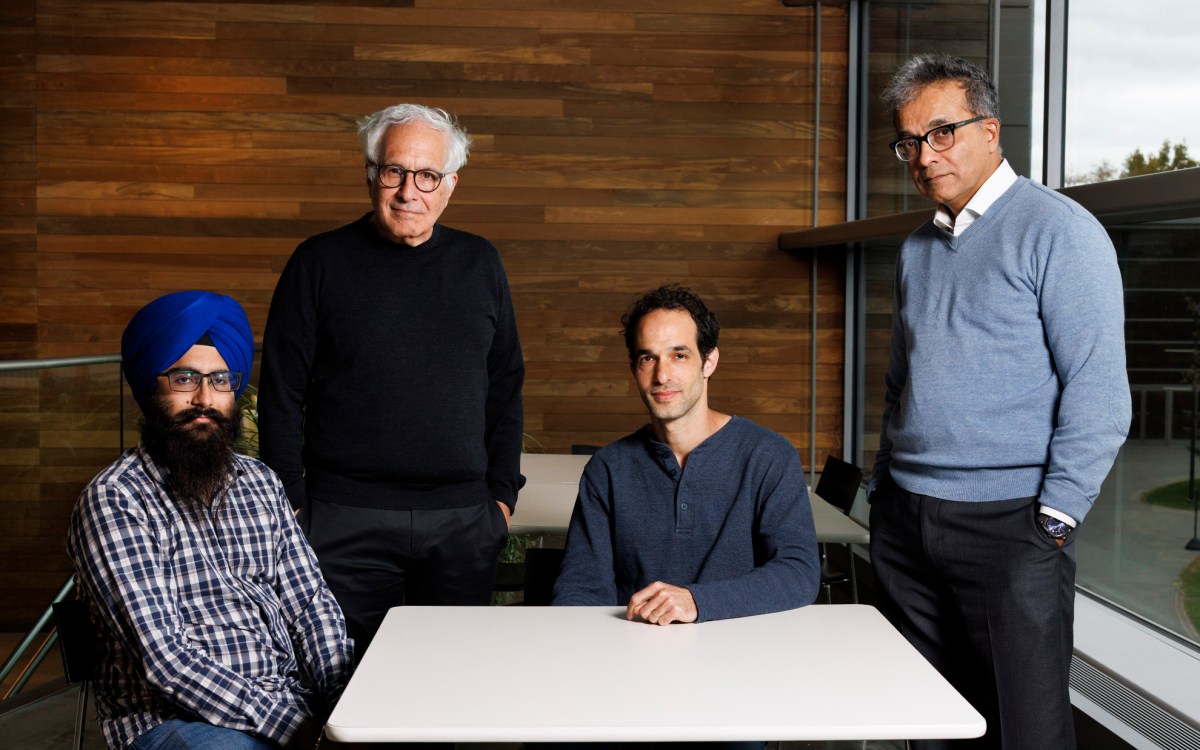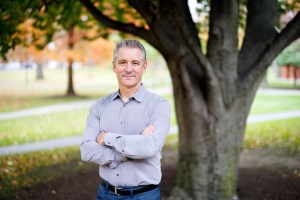Cherry A. Murray is named dean of SEAS
Former Bell Labs exec will start July 1
Cherry A. Murray, who has led some of the nation’s most brilliant scientists and engineers as an executive at Bell Laboratories and the Lawrence Livermore National Laboratory, has been appointed dean of Harvard University’s School of Engineering and Applied Sciences (SEAS), effective July 1, 2009. She will also become the John A. and Elizabeth S. Armstrong Professor of Engineering and Applied Sciences.
Murray, 57, is principal associate director for science and technology at Lawrence Livermore National Laboratory in Livermore, Calif., where she leads 3,500 employees in providing core science and technology support for Lawrence Livermore’s major programs. She is also the current president of the American Physical Society (APS).
Before joining Lawrence Livermore in 2004, Murray had a long and distinguished career at the famed Bell Laboratories, home to creative researchers who went on to win numerous Nobel Prizes, garner tens of thousands of patents, and invent revolutionary technologies such as the laser and the transistor. She was hired into Bell in 1978 as a staff scientist, marking the beginning of a career that culminated in her position as senior vice president for physical sciences and wireless research.
“Cherry is an outstanding scientist, an accomplished administrator, and a warm and engaging person,” says Michael D. Smith, John H. Finley Jr. Professor of Engineering and Applied Sciences and dean of Harvard’s Faculty of Arts and Sciences, of which SEAS is part. “She has demonstrated throughout her career great strategic intelligence, technical leadership, and superb skills in motivating people to work at their maximum potential. I am excited by her vision for SEAS and I look forward to working with her.
“I would also like to take this opportunity to thank interim Dean Frans Spaepen for his thoughtful stewardship of the School of Engineering and Applied Sciences,” Smith says. “Frans’ service leaves SEAS strong and well-positioned for new leadership.”
Murray was elected to the National Academy of Sciences in 1999, to the American Academy of Arts and Sciences in 2001, and to the National Academy of Engineering in 2002. She has served on more than 80 national and international scientific advisory committees, governing boards, and National Research Council (NRC) panels, including chairing the Division of Engineering and Physical Science of the NRC, and serving on the visiting committee for Harvard’s Department of Physics from 1993 to 2004.
“Cherry Murray has a remarkable record of leadership at some of the world’s most respected and influential research organizations,” says Harvard President Drew Faust. “Our School of Engineering and Applied Sciences has made impressive strides in recent years, and she will bring the strategic vision and experience necessary to guide it through its next stage of development. It is a privilege to welcome her to Harvard.”
“Cherry Murray will be a great leader for SEAS,” adds Harvard Provost Steven E. Hyman. “She will also catalyze collaborations across the University. Her ability to work across academic disciplines and bring together diverse departments will help build an exciting future for our faculty and students.”
A celebrated experimentalist, Murray is well-known for her scientific accomplishments using light scattering, an experimental technique where photons are fired at a target of interest. Scientists can then gather insights into surface physics and photonic behavior by analyzing the spray of photons in various directions from such collisions.
She is also a leader in the study of soft condensed matter and complex fluids, hybrid materials that show properties of different phases of matter. The control of suspensions, foams, and emulsions has application for the development of everything from novel drug delivery systems to “lab-on-a-chip” devices.
Among other diverse topics in condensed matter physics, Murray has studied semiconductors’ optical phenomena, nanostructures, phase transitions, and controlled self-assembly of optical materials — all critical for the advancement of quantum optics, engineered semiconductors, and tools such as optical tweezers.
“I have known Cherry Murray for many years as a colleague, researcher, and scientific leader,” says Venkatesh “Venky” Narayanamurti, who stepped down in September after 10 years as SEAS dean. “She has a deep understanding of the interplay between basic and applied research and the role of engineering and applied science as a linking and integrating discipline — rooted in science, focused on discovery and innovation, and connected to the wider world of technology and society. Her appointment as SEAS dean is a tremendous coup. She is a proven leader.”
Born in Fort Riley, Kan., and the daughter of a diplomat, Murray lived in the United States, Japan, Pakistan, South Korea, and Indonesia as a child. She received her B.S. in 1973 and her Ph.D. in physics in 1978 from the Massachusetts Institute of Technology. She has published more than 70 papers in peer-reviewed journals and holds two patents in near-field optical data storage and optical display technology.
In 1989, Murray won the APS’s Maria Goeppert-Mayer Award for outstanding achievement by a woman physicist in the early years of her career, and in 2005, she was awarded APS’s George E. Pake Prize in recognition of outstanding work combining original research accomplishments with leadership and development in industry. In 2002, Discover Magazine named her one of the “50 Most Important Women in Science.”
In recognition of the dramatic renewal and growth of engineering and applied sciences and the increasingly integral role the field plays in education and research at Harvard, the School of Engineering and Applied Sciences transitioned from a division to a full school in 2007. During the past decade, SEAS more than doubled the size of its core faculty. Today, there are 90 total participating members from areas including physics, chemistry, biology, medicine, and public health.
Further, the School has strengthened foundational disciplines such as applied mathematics and applied physics; built capacity in areas such as electrical engineering and computer science; and nurtured emerging areas such as bioengineering and nanotechnology. Subsequently, sponsored research funding increased by more than 60 percent and linkages to industry have been significantly bolstered. The School has also enhanced its undergraduate programs by adding new courses and laboratories and increased the size of its graduate student population to 350, remaining one of the most selective graduate engineering programs in the country.
Although Harvard’s first formal programs related to engineering began with the creation of the Lawrence Scientific School in 1847, the modern administrative and academic structure developed following the Second World War with the emphasis of applied physics and other engineering-related disciplines. In addition to Narayanamurti, Murray will follow in the footsteps of a distinguished list of Harvard deans in engineering and applied sciences, including Nobel Laureate John Van Vleck (1899-1980); Harvey Brooks (1915-2004); and Paul Martin, Van Vleck Research Professor of Pure and Applied Physics.





